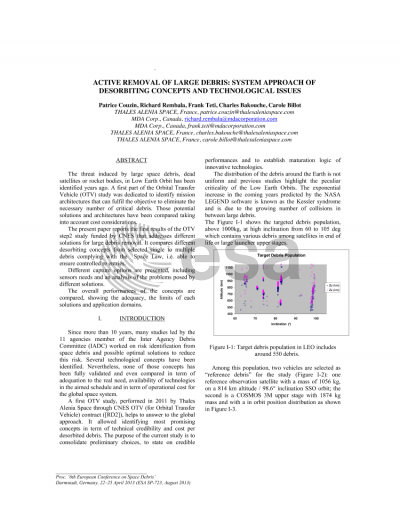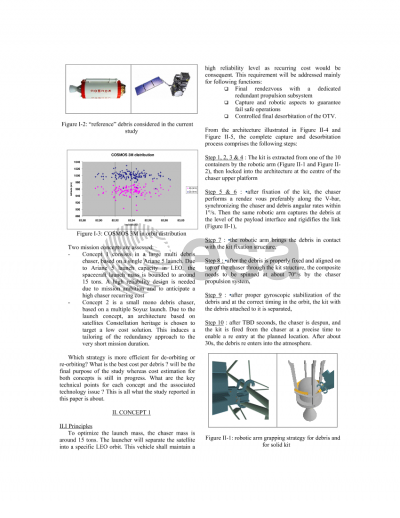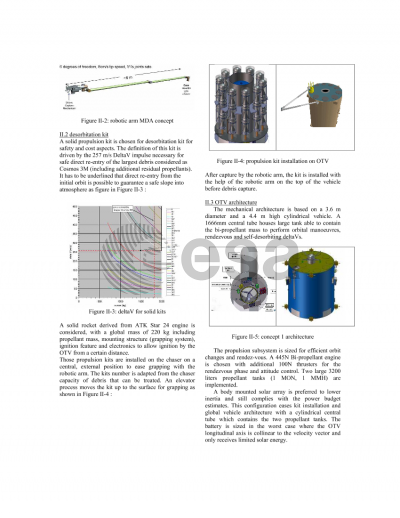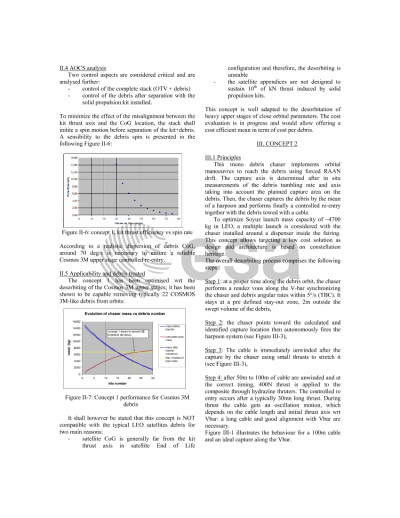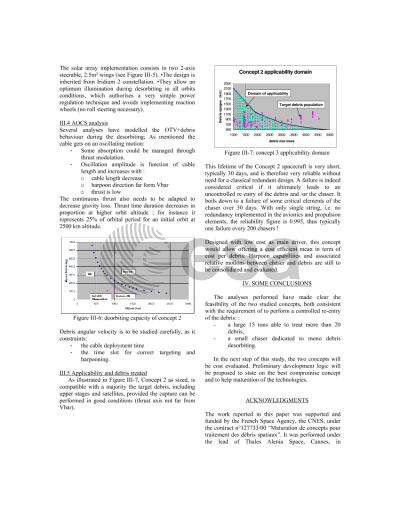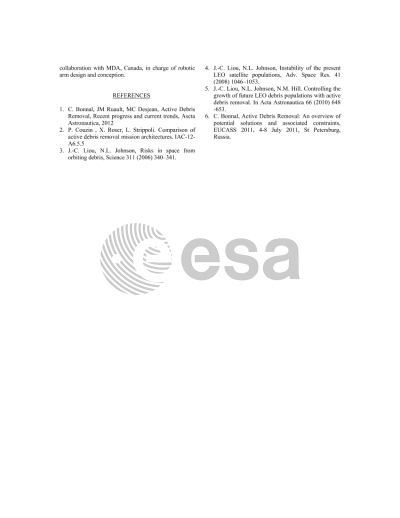Document details

Abstract
The threat induced by large space debris, dead satellites or rocket bodies, in Low Earth Orbit has been identified years ago. A first part of the Orbital Transfer Vehicle (OTV) study was dedicated to identify mission architectures that can fulfil the objective to eliminate the necessary number of critical debris. Those potential solutions and architectures have been compared taking into account cost considerations. The present paper reports the first results of the OTV step2 study funded by CNES that addresses different solutions for large debris removal. It compares different desorbiting concepts from selected single to multiple debris complying with the Space Law, i.e. able to ensure controlled re entries. Different capture options are presented, including sensors needs and an analysis of the problems posed by different solutions. The overall performances of the concepts are compared, showing the adequacy, the limits of each solutions and application domains.
Preview
